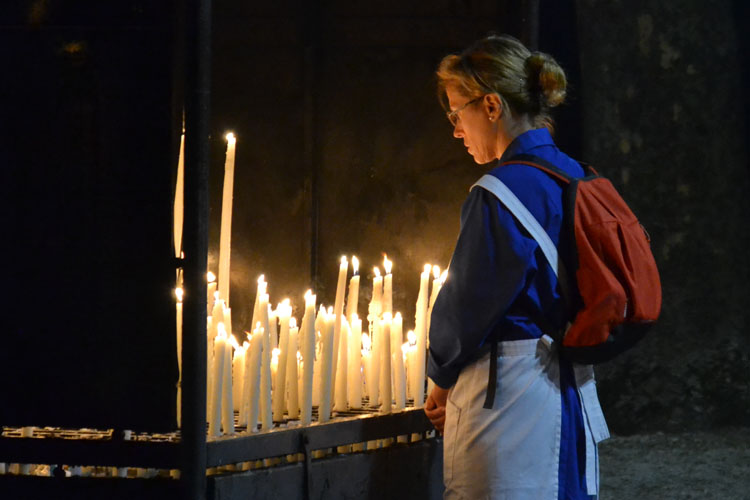
Origins of candles in liturgical worship
Fire and light have always been an important feature of worship in the Christian and Jewish religions. As far back as the time of Exodus we hear how the people were instructed to “keep a flame burning perpetually” (Exodus 27:19-20), as “perpetual incense before the Lord from generation to generation” (Exodus 30:7-8) and as a “lamp stand in the Tent of Meeting… set up before the Lord as He has commanded Moses” (Exodus 40:24-25).
We see here that the ancient Jewish people used a perpetual fire to be two major things: a constant act of devotion, and a symbol of a holy space where God dwells. This practice is most clearly seen being continued by the tabernacle in every church. The tabernacle, which is the Latin for ‘tent‘, is where the body and blood of Christ are kept between Masses. Just like in ancient times, a candle is kept perpetually burning beside it for the same reasons practiced back then; God is physically with us within the ‘tent’ and we wish to perpetually adore him.
Additional symbolism from the New testament
This being the basis, Christ’s coming added further dimensions to our use of candles. In John 8:12, Jesus says of himself: “I am the Light of the world; the one who follows me will not walk in darkness, but will have light and life”. The early Christians, who already saw lighting candles as an act of worship and devotion, began to also see the candle as a symbol of communion with Christ and a symbol of Him and His love in the darkness.
As the liturgy took shape, candles became a crucial symbol in many of the sacraments. While the reasons for this are now covered by reading the following scripture you can see how the Catholic use of candles in the liturgy has a very strong biblical basis: Exodus 25:31-38, Exodus 30:7-8, Exodus 40:24-25, 2 Chronicles 13:11, 1 Maccabees 4:49-50, 2 Maccabees 10:3, Matthew 5:14-16, Mark 4:21-22, Luke 11:33 and Hebrews 9:2
So why do Catholics light candles at statues and icons?
With our understanding of lighting candles now as an act of devotion, a symbol of God’s presence and communion with Him through Jesus, early Christians began placing candles on the tombs of martyrs in the catacombs. They did this because they understood the martyr to be a person who, now being certainly in heaven, was in complete communion with God. As Catholics, we believe it is only those in hell who are truly dead and that those in heaven especially are living in a higher reality (John 3:16).
This being so, we ask this person in full communion with Christ to pray for us in much the same way we would ask a dear and close friend. Due to their complete communion with God, their intersessions are especially helpful.
In lighting a candle before a relic, statue or icon we are saying that God resides fully within that person, the person is in full communion with God and that that person is giving perpetual glory to God. Catholics practice this not to honour the image itself, but rather the one it truly represents. When we ask this saint to pray with and for us, this light, as it is kept burning, also shows our desire to remain in God’s presence as we go through our daily duties at home and in the workplace.
Lastly, when candles are lit before Christ’s image, it is done to show our reverence to Him who deserves our adoration and thanksgiving and who alone can forgive our sins and bring us back into a deeper relationship with Him. Only when candles are lit before images of God are they being used for worship of the depicted figure.
Subscribe to our Newsletter
Sign up to receive a newsletter from Westminster Youth Ministry: